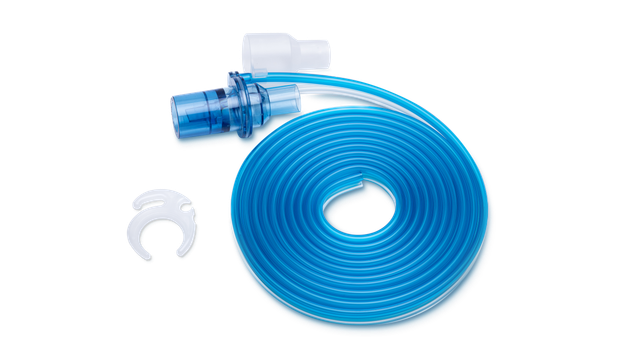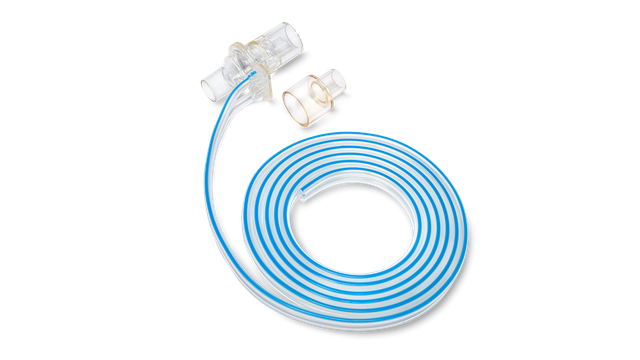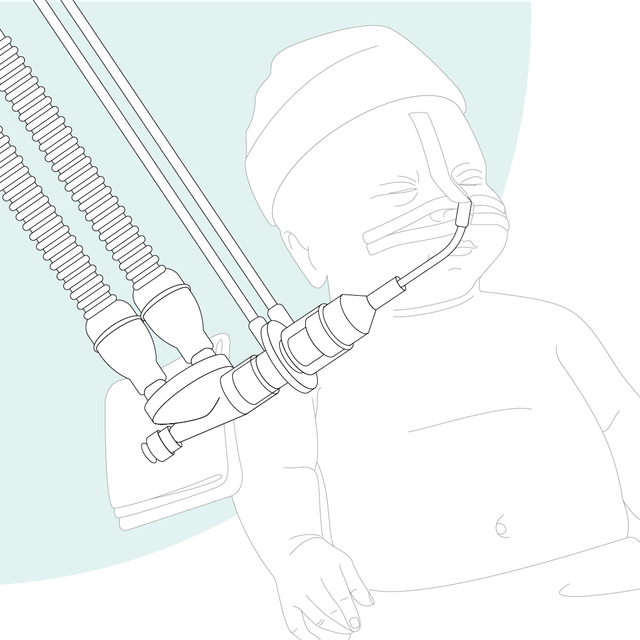
Подойдите ближе! Измерение проксимального потока
С 1983 года проксимальные датчики потока были и остаются важнейшими деталями всех аппаратов ИВЛ Hamilton Medical. Весь процесс вентиляции зависит от измерений и точности датчика потока, поскольку он передает показания на входе в дыхательные пути.
Точные данные об объеме, потоке и давлении имеют решающее значение для постановки правильного диагноза и предотвращения распространенных побочных эффектов из‑за неправильных настроек вентиляции. От него также зависит использование некоторых из наших передовых технологий, например режимов ASV и INTELLiVENT‑ASV, функции IntelliSync+ и инструмента P/V Tool.

Точность ‑ это необходимость! От нее зависят пациенты
Аппараты ИВЛ Hamilton Medical измеряют показания потока и давления рядом с дыхательными путями пациента. Исследования показали, что для определения дыхательного объема пациентов с искусственной вентиляцией легких датчик потока необходимо подсоединить к эндотрахеальной трубке (

Есть ли у нас доказательства? Клиническое подтверждение
Точное определение дыхательного объема на выдохе (VTE) имеет решающее значение (
Преимущества пользователя:
- проксимальное расположение устраняет влияние податливости дыхательного контура на измерения потока и объема; (
Cannon ML, Cornell J, Tripp‑Hamel DS, et al. Tidal volumes for ventilated infants should be determined with a pneumotachometer placed at the endotracheal tube. Am J Respir Crit Care Med. 2000;162(6):2109‑2112. doi:10.1164/ajrccm.162.6.99061121 ) - измерение VTE подвергается меньшему сопротивлению со стороны дыхательной системы; (
Nève V, Leclerc F, Noizet O, et al. Influence of respiratory system impedance on volume and pressure delivered at the Y piece in ventilated infants. Pediatr Crit Care Med. 2003;4(4):418‑425. doi:10.1097/01.PCC.0000090289.98377.153 ) - происходит меньше утечек, которые могут повлиять на результат. (
Al‑Majed SI, Thompson JE, Watson KF, Randolph AG. Effect of lung compliance and endotracheal tube leakage on measurement of tidal volume. Crit Care. 2004;8(6):R398‑R402. doi:10.1186/cc29544 )
Ассортимент датчиков потока Hamilton Medical
Компания Hamilton Medical предлагает расходные материалы для всех групп пациентов: взрослых, детей и младенцев. Доступны продукты для многократного или разового использования (выбор зависит от политики вашего учреждения).

Проксимальный датчик потока разового использования для педиатрических/взрослых пациентов
- Доступны трубки разной длины: 188, 260 и 330 см
- НД 22 / ВД 15, сторона пациента
- Адаптер для калибровки
- Зажим для крепления трубки

Проксимальный датчик потока разового использования для младенцев
- Доступны трубки разной длины: 160, 188 и 310 см
- ВД 15, сторона пациента
- Адаптер для калибровки
- Зажим для крепления трубки

Проксимальный датчик потока многократного использования для педиатрических/взрослых пациентов
- Длина трубки: 188 см
- НД 22 / ВД 15, сторона пациента
- Адаптер для калибровки
- Застежки для крепления трубок

Отзывы клиентов
Одноразовые датчики потока Hamilton Medical помогают предотвратить перекрестное заражение, поскольку используются только для одного пациента.
Д‑р Роберт Лопес
Главный врач отделения искусственной вентиляции легких до 2018 г.,
медицинский центр Лаббокского университета, штат Техас, США

Полезно знать! Правильное использование датчика потока
Дополнительные сведения
Flow sensor technical specifications
Tidal volumes for ventilated patients should be determined at the endotracheal tube
Reprocessing Guide Flow sensor
Instructions for use adult/pediatric, flow sensor, single use
Список литературы
- 1. Cannon ML, Cornell J, Tripp‑Hamel DS, et al. Tidal volumes for ventilated infants should be determined with a pneumotachometer placed at the endotracheal tube. Am J Respir Crit Care Med. 2000;162(6):2109‑2112. doi:10.1164/ajrccm.162.6.9906112
- 2. Gammage, Gary W.; Banner, Michael J.; Blanch, Paul B.; Kirby, Robert R. VENTILATOR DISPLAYED TIDAL VOLUME‑WHAT YOU SEE MAY NOT BE WHAT YOU GET, Critical Care Medicine: April 1988 ‑ Volume 16 ‑ Issue 4 ‑ p 454
- 3. Nève V, Leclerc F, Noizet O, et al. Influence of respiratory system impedance on volume and pressure delivered at the Y piece in ventilated infants. Pediatr Crit Care Med. 2003;4(4):418‑425. doi:10.1097/01.PCC.0000090289.98377.15
- 4. Al‑Majed SI, Thompson JE, Watson KF, Randolph AG. Effect of lung compliance and endotracheal tube leakage on measurement of tidal volume. Crit Care. 2004;8(6):R398‑R402. doi:10.1186/cc2954





